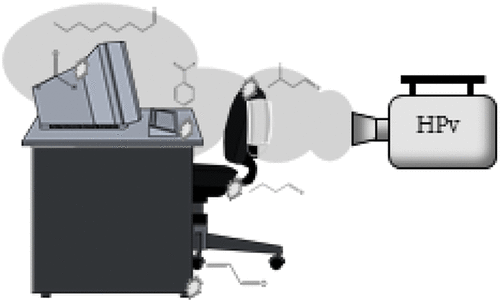当前位置:
X-MOL 学术
›
Environ. Sci. Technol. Lett.
›
论文详情
Our official English website, www.x-mol.net, welcomes your
feedback! (Note: you will need to create a separate account there.)
Hydrogen Peroxide Vapor as an Indoor Disinfectant: Removal to Indoor Materials and Associated Emissions of Organic Compounds
Environmental Science & Technology Letters ( IF 8.9 ) Pub Date : 2021-02-03 , DOI: 10.1021/acs.estlett.0c00948 Dustin Poppendieck 1 , Heidi Hubbard 1, 2 , Richard L. Corsi 1, 3
Environmental Science & Technology Letters ( IF 8.9 ) Pub Date : 2021-02-03 , DOI: 10.1021/acs.estlett.0c00948 Dustin Poppendieck 1 , Heidi Hubbard 1, 2 , Richard L. Corsi 1, 3
Affiliation

|
Vaporous hydrogen peroxide (VHP) has been used to disinfect a wide range of biological contaminants in buildings. It has attracted renewed attention for inactivation of the SARS-CoV-2 virus on N95 respirators, allowing their subsequent reuse, as well as potential use for decontamination of indoor spaces frequented by those who have COVID-19. Knowledge of VHP removal to indoor materials and associated emissions of organic compounds have not been widely reported but would be valuable for indoor disinfection planning. Twenty-three building materials were individually exposed to VHP at typical disinfectant concentrations in small chamber experiments. Deposition velocities for VHP and area-normalized masses of organic compound release were quantified for each material and compared with results from studies involving ozone (O3) and chlorine dioxide (OClO) at similar disinfectant concentrations using similar materials in the same experimental system. Higher (typically >200 cm h–1) but relatively constant VHP deposition velocities were observed for most materials. In contrast, the deposition velocity for O3 and OClO decayed when exposed to the same materials. Relatively low levels (<2 mg m–2) of quantified emissions were released from materials over an approximate 6 h period following exposure to VHP, values lower than those observed for ozone.
中文翻译:

作为室内消毒剂的过氧化氢蒸气:去除室内材料和相关有机化合物的排放
蒸汽过氧化氢(VHP)已用于对建筑物中的各种生物污染物进行消毒。N95口罩上的SARS-CoV-2病毒失活,使其重新使用,以及潜在用于COVID-19者经常去室内空间的净化,已经引起了人们的广泛关注。尚未广泛报道将VHP去除室内材料以及相关有机化合物排放的知识,但对于室内消毒计划很有用。在小室内实验中,将23种建筑材料分别以典型的消毒剂浓度暴露于VHP。对每种材料的VHP沉积速度和有机化合物释放的面积归一化质量进行了量化,并与涉及臭氧(O 3)的研究结果进行了比较。)和二氧化氯(OClO),在相同的实验系统中使用相似的材料使用相似的消毒剂浓度。对于大多数材料,观察到较高的(通常> 200 cm h –1)但相对恒定的VHP沉积速度。相反,当暴露于相同材料时,O 3和OClO的沉积速度下降。暴露于VHP后大约6小时内,从材料中释放出相对较低的定量排放物(<2 mg m –2),该值低于臭氧所观察到的值。
更新日期:2021-04-13
中文翻译:

作为室内消毒剂的过氧化氢蒸气:去除室内材料和相关有机化合物的排放
蒸汽过氧化氢(VHP)已用于对建筑物中的各种生物污染物进行消毒。N95口罩上的SARS-CoV-2病毒失活,使其重新使用,以及潜在用于COVID-19者经常去室内空间的净化,已经引起了人们的广泛关注。尚未广泛报道将VHP去除室内材料以及相关有机化合物排放的知识,但对于室内消毒计划很有用。在小室内实验中,将23种建筑材料分别以典型的消毒剂浓度暴露于VHP。对每种材料的VHP沉积速度和有机化合物释放的面积归一化质量进行了量化,并与涉及臭氧(O 3)的研究结果进行了比较。)和二氧化氯(OClO),在相同的实验系统中使用相似的材料使用相似的消毒剂浓度。对于大多数材料,观察到较高的(通常> 200 cm h –1)但相对恒定的VHP沉积速度。相反,当暴露于相同材料时,O 3和OClO的沉积速度下降。暴露于VHP后大约6小时内,从材料中释放出相对较低的定量排放物(<2 mg m –2),该值低于臭氧所观察到的值。











































 京公网安备 11010802027423号
京公网安备 11010802027423号